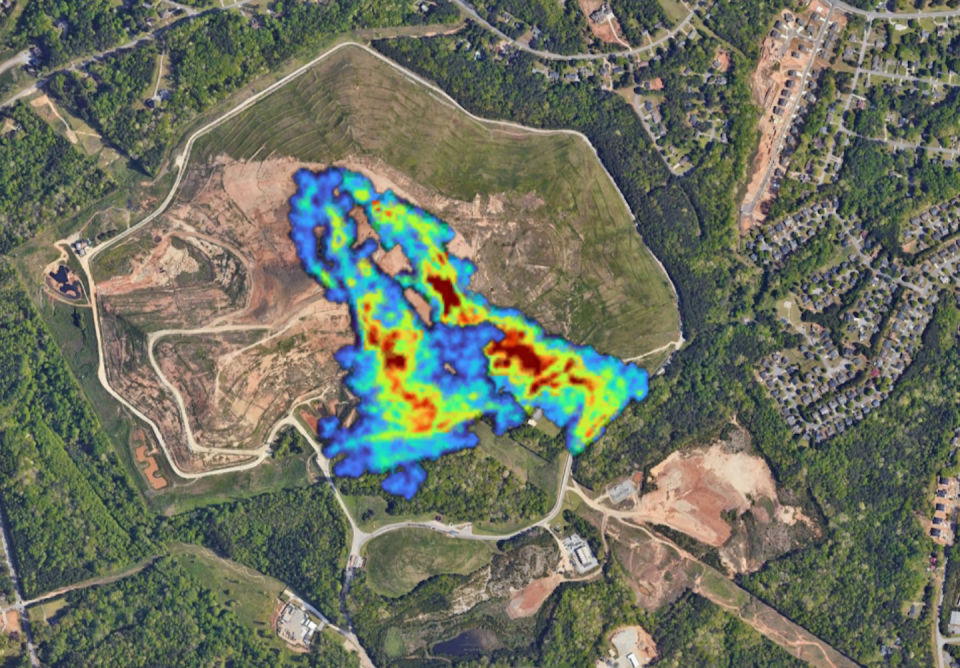Far more methane, a potent greenhouse gas, is being released from landfills and oil and gas operations around the world than governments realized, recent airborne and satellite surveys show. That’s a problem for the climate as well as human health. It’s also why the U.S. government has been tightening regulations on methane leaks and wasteful venting, most recently from oil and gas wells on public lands.
The good news is that many of those leaks can be fixed – if they’re spotted quickly.
Riley Duren, a research scientist at the University of Arizona and former NASA engineer and scientist, leads Carbon Mapper, a nonprofit that is planning a constellation of methane-monitoring satellites. Its first satellite, a partnership with NASA’s Jet Propulsion Laboratory and the Earth-imaging company Planet Labs, launches in 2024.
Duren explained how new satellites are changing companies’ and governments’ ability to find and stop methane leaks and avoid wasting a valuable product.
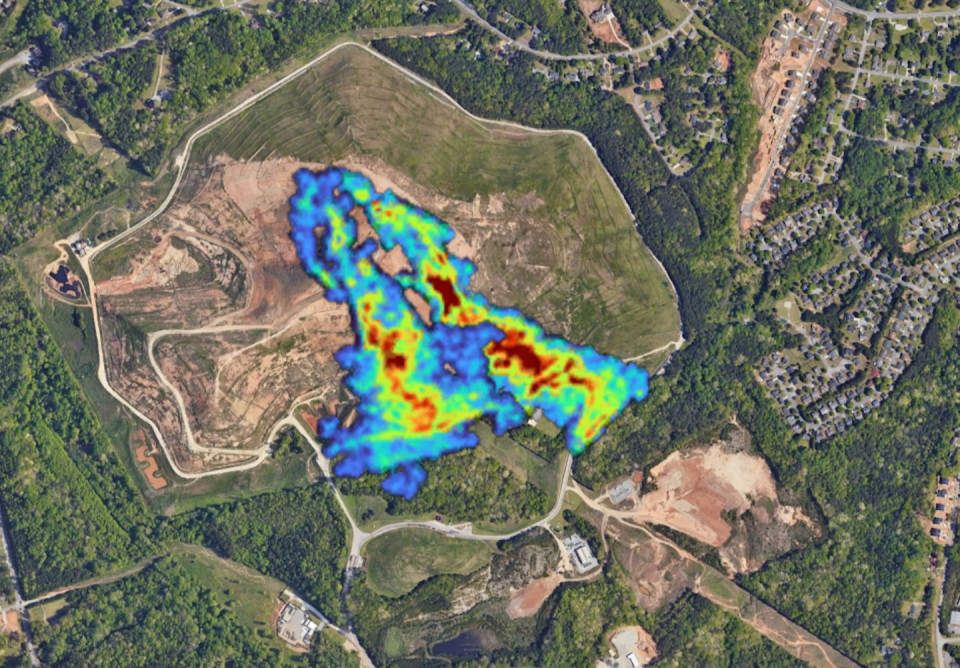
Why are methane emissions such a concern?
Methane is the second-most common global-warming pollutant after carbon dioxide. It doesn’t stay in the atmosphere as long – only about a decade compared to centuries for carbon dioxide – but it packs an outsized punch.
Methane’s ability to warm the planet is nearly 30 times greater than carbon dioxide’s over 100 years, and more than 80 times over 20 years. You can think of methane as being a very effective blanket that traps heat in the atmosphere, warming the planet.
What worries many communities is that methane is also a health problem. It is a precursor to ozone, which can worsen asthma, bronchitis and other lung problems. And in some cases, methane emissions are accompanied by other harmful pollutants, like benzene, a carcinogen.
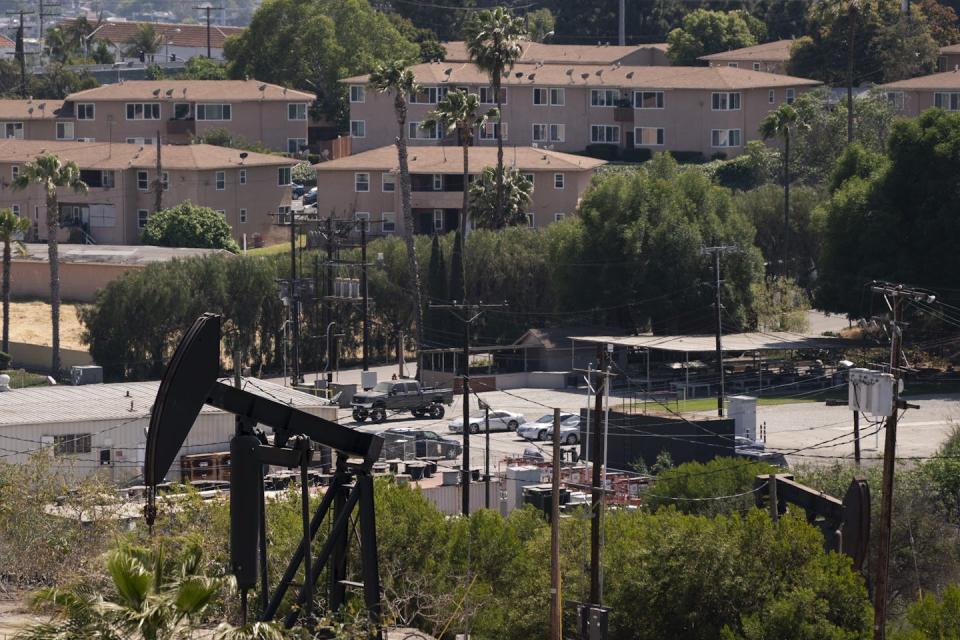
In many oil and gas fields, less than 80% of gas that comes out of the ground from a well is methane – the rest can be hazardous air pollutants that you wouldn’t want anywhere near your home or school. Yet until recently, there was very little direct monitoring to find leaks and stop them.
Why are satellites necessary for catching methane leaks?
In its natural form, methane is invisible and odorless. You probably wouldn’t know there was a massive methane plume next door if you didn’t have special instruments to detect it.
Companies have traditionally accounted for methane emissions using a 19th-century method called an inventory. Inventories calculate emissions based on reported production at oil and gas wells or the amount of trash going into a landfill, where organic waste generates methane as it decomposes. There is a lot of room for error in this assumption-based accounting; for example, it does not account for unknown leaks or persistent venting.
Until recently, the state of the art in leak detection from oil and gas operations involved a technician paying a visit to a well pad every 90 days or so with a handheld infrared camera or gas analyzer. But a large leak can release a massive amount of gas over a period of several days and weeks or may occur in locations not readily accessible, meaning many of these so-called super-emitters go undetected.
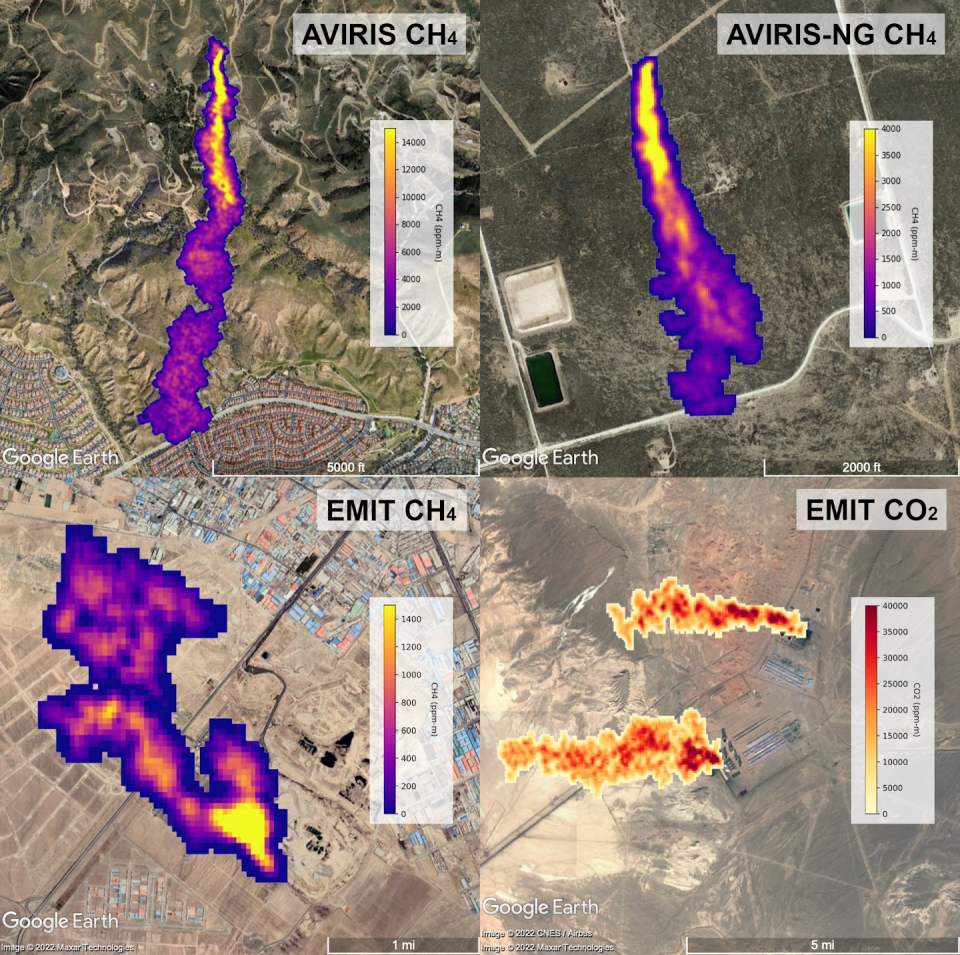
Remote sensing satellites and airplanes, on the other hand, can quickly survey large areas routinely. Some of the newer satellites, including the ones we’re launching through the Carbon Mapper Coalition, can zoom in to individual sites at high resolution, so we can pinpoint methane super-emitters to the specific well pad, compressor station or section of a landfill.
You can see an example of the power of remote sensing in our recent paper in the journal Science. We surveyed 20% of the open landfills in the U.S. with airplanes and found that emissions on average were 40% higher than the emissions reported to the federal government using assumption-based accounting.

If scientists can monitor regions frequently and consistently from satellites, then they can flag super-emitter activity and notify the operator quickly so the operator can find the problem while it’s still happening and fix any leaks.
How do satellites detect methane from space?
Most satellites capable of methane detection use some form of spectroscopy.
A typical camera sees the world in three colors – red, green and blue. The imaging spectrometers we use were developed by NASA’s Jet Propulsion Laboratory and see the world in almost 500 colors, including wavelengths beyond the visible spectrum into infrared, which is essential for detecting and measuring greenhouse gases.
Greenhouse gases like methane and carbon dioxide absorb heat in the infrared wavelengths – each with unique fingerprints. Our technology analyzes sunlight reflected from the Earth’s surface to detect those infrared fingerprints of methane and carbon dioxide in the atmosphere.
These signatures are distinct from all other gases, so we can image plumes of methane and carbon dioxide to determine the origins of individual super-emitters. Once we use spectroscopy to measure the amount of gas in a given plume, we can calculate an emission rate using wind speed data.
What can the new satellites Carbon Mapper plans to launch do that others haven’t yet?
Each satellite has different and often complementary capabilities. MethaneSat, which the Environmental Defense Fund just launched in March 2024, is like a wide-angle lens that will produce a very precise and complete picture of methane emissions across large landscapes. Our Carbon Mapper Coalition satellites will complement MethaneSAT by acting like a collection of telephoto lenses – we’ll be able to zoom in to pinpoint individual methane emitters, like zooming in on a bird nesting in a tree.
Working with our partners at Planet Labs and NASA, we plan to launch the first Carbon Mapper Coalition satellite in 2024, with a goal of expanding the constellation in coming years to ultimately provide daily methane monitoring of high-priority regions around the world. For example, about 90% of the methane emissions from fossil-fuel production and use is estimated to come from only 10% of the Earth’s surface. So, we plan to focus Carbon Mapper Coalition satellites on oil, gas and coal production basins; major urban areas with refineries, wastewater plants and landfills; and major agriculture regions.
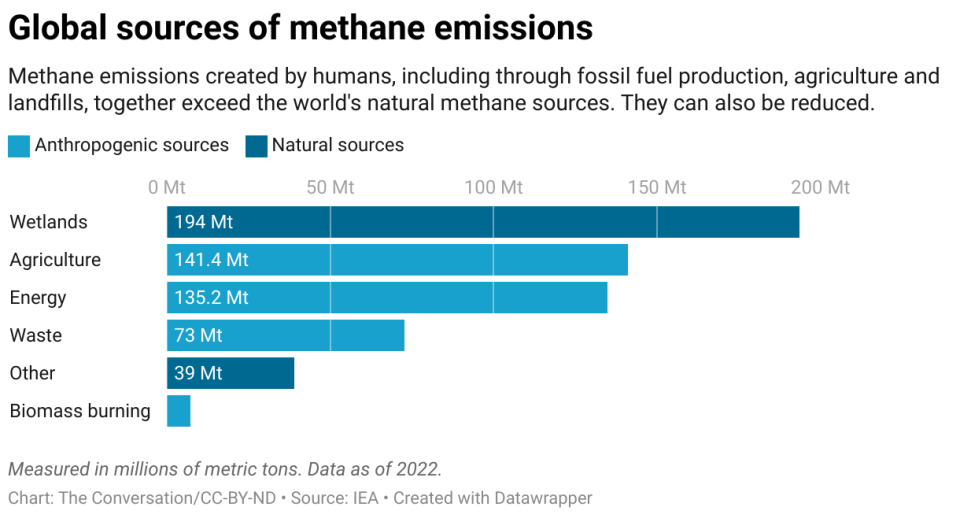
How will your monitoring data be used?
We expect from experience sharing our aircraft data with facility operators and regulators that a lot of our future satellite data will be used to guide leak detection and repair efforts.
Many oil and gas companies, landfill operators and some large farms with methane digesters are motivated to find leaks because methane in those cases is valuable and can be captured and put to use. So in addition to climate and health impacts, methane leaks are equivalent to venting profits into the atmosphere.
With routine satellite monitoring, we can quickly notify facility owners and operators so they can diagnose and fix any problems, and we can continue to monitor the sites to verify that leaks stay fixed.
Our data can also help to warn nearby communities of risks, educate the public, and guide enforcement efforts in cases where companies aren’t voluntarily fixing their leaks. By measuring trends in high-emission methane events over time and across basins, we can also contribute to assessments about whether policies are having their intended effect.
This article is republished from The Conversation, a nonprofit, independent news organization bringing you facts and analysis to help you make sense of our complex world.
It was written by: Riley Duren, University of Arizona.
Read more:
Riley Duren is Chief Executive Officer of the non-profit organization Carbon Mapper. Carbon Mapper receives funding from a number of philanthropic organizations as well as grants from the National Aeronautics and Space Administration and the US Environmental Protection Agency.

